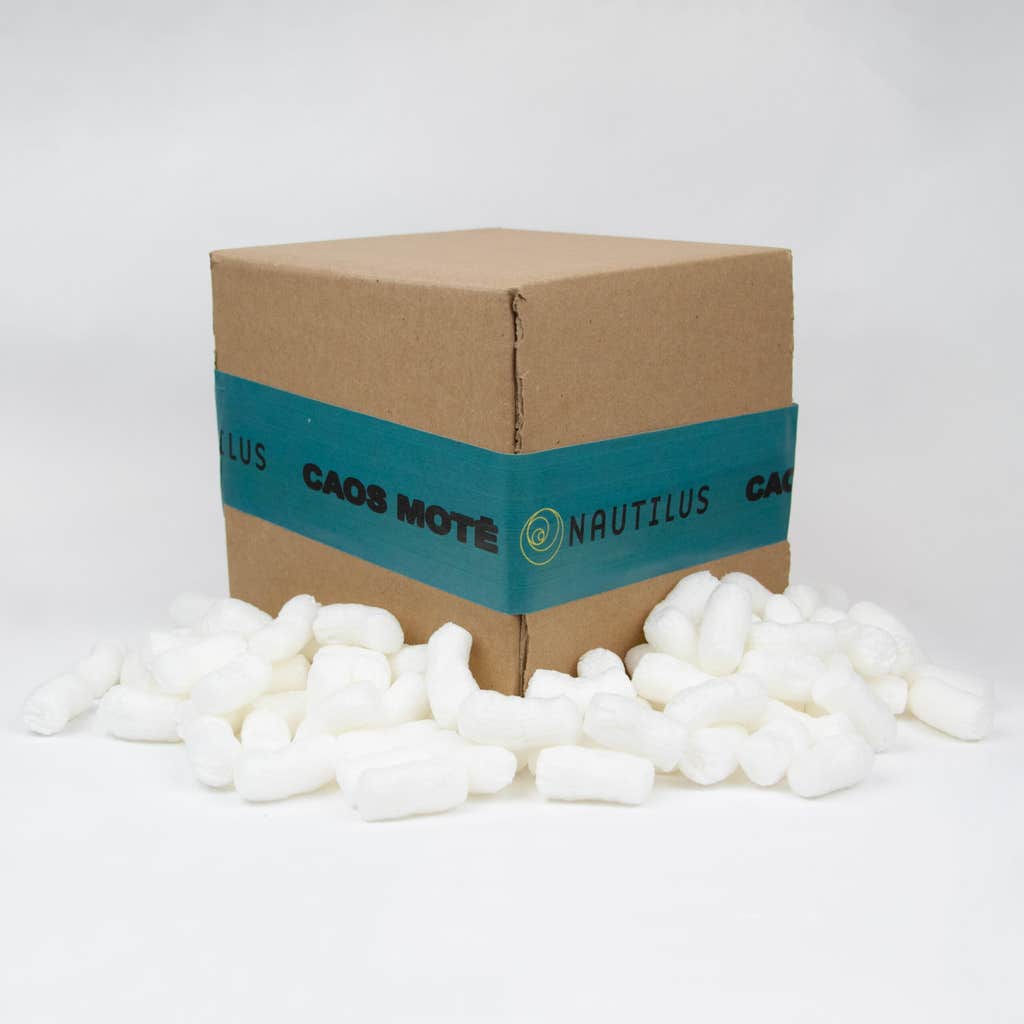
Perfume is a poetry of atoms. Nautilus is celebrating Earth day with the first-ever subscriber-exclusive product: An organic soy candle—inspired by growth, regeneration, and the preservation of geodiversity—with a custom Nautilus fragrance.
We’ve commissioned this handmade, limited-run candle by Caos Motē, the studio of Brooklyn-based designer Sam Malloy. Made from upcycled concrete that turns into a planter when it’s burned through (lavender seeds included), the candle is perfumed by a custom Nautilus-inspired fragrance created by Saskia Wilson-Brown, founder of the Institute for Art & Olfaction in Los Angeles. Ten percent of proceeds will go to this non-profit, devoted to access, education, and experimentation with scent.
With the concept of regeneration as its muse, the vessel is made from upcycled cement, and perfumed by a fragrance of rich, loamy earth, which is rounded by notes of Iranian galbanum, French lavender, and cedar. The result is a simple, earthy smell—a welcoming, deeply familiar aromatic reminiscent of walking in a wet forest, fog rising from the earth.

The candle is hand-poured, in the shape of a milk crate, in small batches at the Bed-Stuy headquarters of Caos Motē—which stands for “constantly accepting oneself more often than ever.” Malloy works with cement, rebar, traffic dividers, highways, street lamps, and the like, retelling and reinventing the stories of utilitarian materials used for engineering and civic infrastructure.
I visited Malloy in his studio. He says regenerative recycling was an inspiration for the candle’s concept. “Cinder block is a motif in my work,” he says. “It stems from the desire to make everyday civic materials into more beautiful, functional objects. The milk crate represents upcycling existing materials, like plastic, in this way.”
He tells me that his candles become functional objects after they burn. Another burns to reveal a small concrete mountain at the base—this one becomes a pen holder or a planter; peat moss pellets and lavender seeds are included in a small envelope.
It stems from the desire to make everyday civic materials into more beautiful, functional objects.
The candle takes its name from a conversation with Saskia Wilson-Brown, in which she described the aromatic component of the candle as “devoted to the mother of all growth: rich, loamy earth.” This top note is the compound geosmin, which Wilson-Brown told me is a naturally occurring bicyclic terpene that has a deeply earthy component (and is also one of the major aromatic components of beets). Its name derives from the Ancient Greek words geõ, meaning “earth”, and osmē, meaning smell.

Photo courtesy of Sam Malloy.
Wilson-Brown tells me that geosmin is the molecule responsible for the smell of sod (dirt)—and it’s a “complicated beast.” To give me a mental image, Wilson-Brown prompts me to imagine natural molecules as a lego house; the Geosmin lego brick is the one that carries the distinct smell of dirt. Because nature wouldn’t ever produce it in isolation, making it an aromatic requires lab replication, an identical copy of the natural thing. In this case, with the exception of this requisite synthetic, every material in the candle is a natural fragrance.
On its own, geosmin is the organic chemical compound responsible for the distinctive earthy smell in soil and in beets. When rain falls on dry soil, it is geosmin’s reaction with other molecules that’s responsible for petrichor, a scent deeply familiar—and often mystical—to most humans. This rain scent is named appropriately after the words meaning “blood of the gods” in Greek mythology.
Devoted to the mother of all growth: rich, loamy earth.
This Nautilus special edition represents what Wilson-Brown calls an ideal outcome of the slow perfume movement: small batches, a sensible mix of natural and synthetics (some naturals require gargantuan quantities of plant material, often compromising). On a deeper level, the candle represents the efforts of artists working outside of the production conventions that have become standard in modern history; it is an emblem of sustainable, deliberate design, bearing both material and conceptual relation to its origins, the Earth.![]()
The limited batch of 50 is only available to Nautilus paying members. For a chance to order yours this Earth Day, subscribe to Nautilus.
Story by C.L. Croft.
Lead image courtesy of Sam Malloy.



























